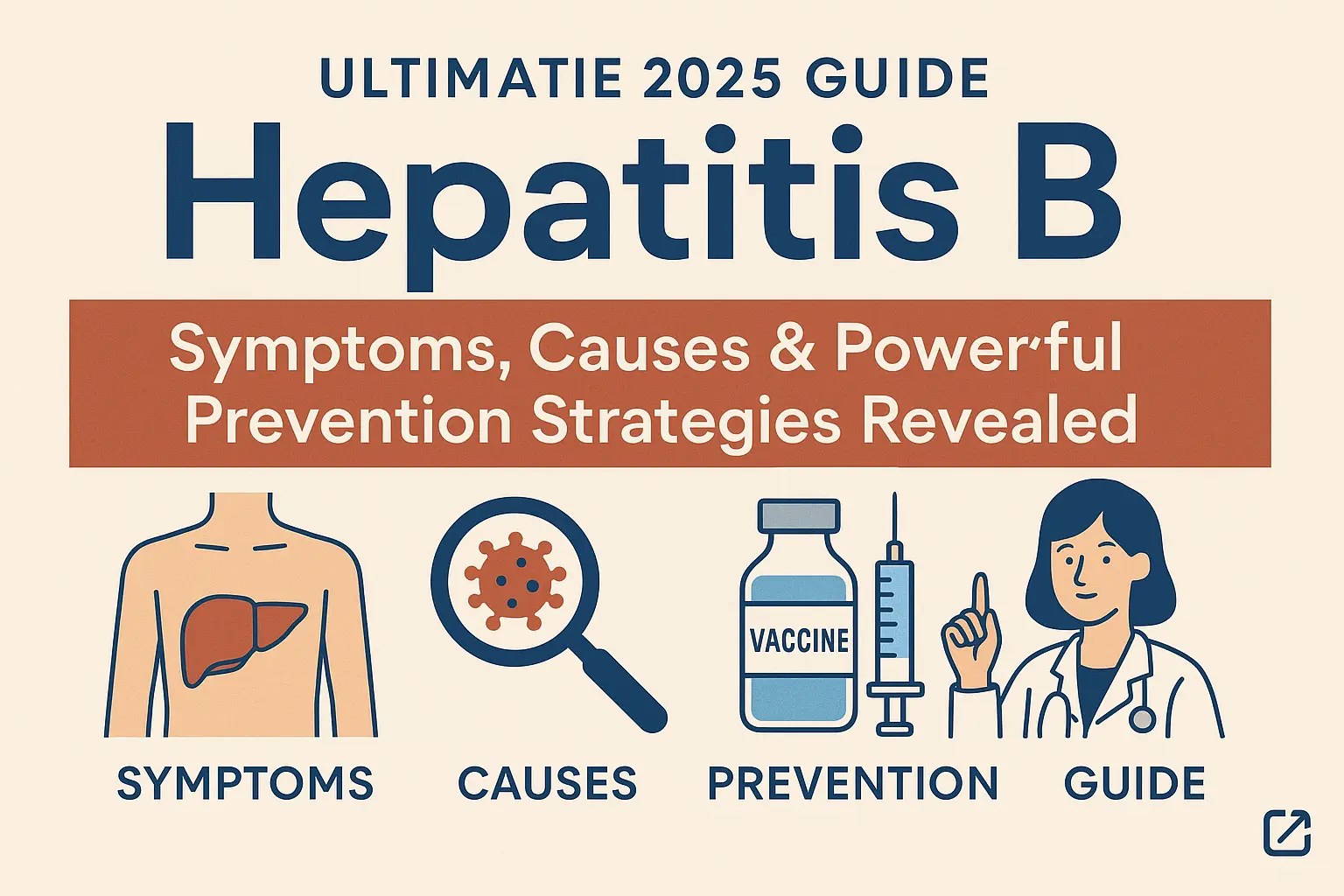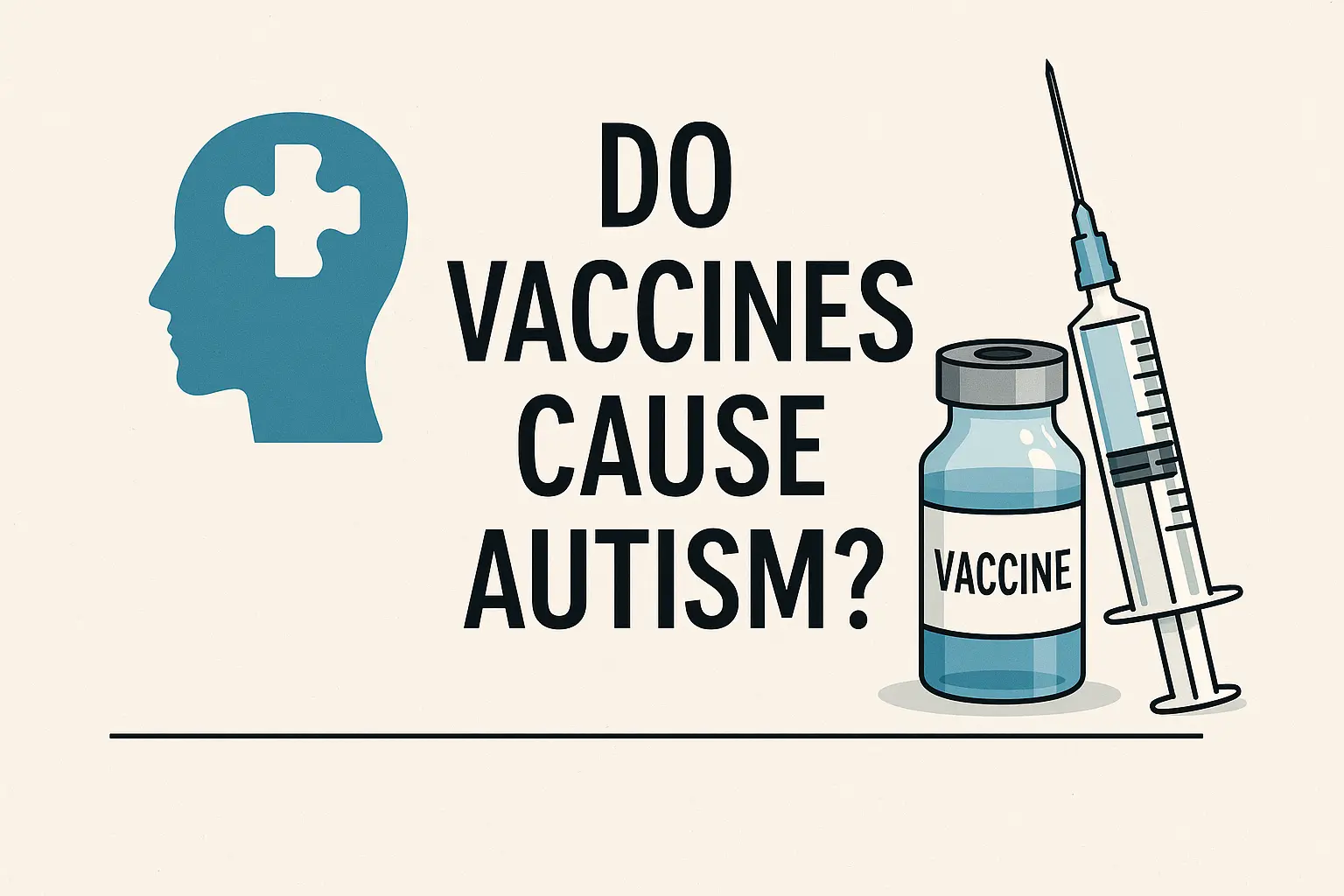Introduction
Hepatitis B exists as a dangerous infectious disease which spreads worldwide to impact hundreds of millions of people throughout all continents. The disease continues to be a major public health issue in 2025 but it has become the most studied and preventable disease of the modern era. People across the globe are conducting more online searches about hepatitis B symptoms and curability and transmission methods because they seek reliable and current information.
In this comprehensive guide, you’ll learn exactly what this infection is, how it spreads, how to recognize symptoms, what the latest science says about treatment and prevention, and how to protect yourself and your loved ones. You’ll also find the latest vaccine news, clear answers to the top questions, myth-busting facts, and direct links to the world’s most reliable medical resources.
What Is Hepatitis B?
The virus targets the liver and may result in either acute or chronic illness, depending on the duration of infection. HBV functions as an extremely contagious virus which spreads through blood contact and sexual relations and vertical transmission from mother to child during delivery.
The liver functions as a critical body organ which handles nutrient breakdown and toxin elimination while supporting your immune system to fight off infections. Hepatitis B infection of the liver produces symptoms that range from mild fatigue to severe liver failure which can result in cancer or death if left untreated.
Why this disease Is Still a Global Health Challenge in 2025
The world continues to face hepatitis B as a major health issue which will persist through 2025.
Hepatitis B continues to be a major source of liver disease across the globe even though scientists have made significant advancements in the field for many years.
Over 290 million people are living with chronic hepatitis B globally, according to WHO.
The annual number of new infections keeps increasing while most cases emerge in regions which lack sufficient medical facilities.
Chronic infection can harm the liver for years without obvious symptoms, so early detection and vaccination are crucial for prevention.
The fight against HIV/AIDS continues because people lack knowledge about available treatments and vaccines and because of social discrimination and false information that spreads throughout urban growth zones and developing nations.
The Virus and Transmission
The Hepatitis B Virus operates through a complex scientific mechanism that scientists have thoroughly studied.
The Powerful Science Behind the Hepatitis B Virus
The hepatitis B virus is a small, highly robust DNA virus—one of the most infectious known. It can survive outside the body for at least 7 days and is resistant to some disinfectants. The situation requires increased focus on prevention and awareness efforts.
Modes of Transmission:
Blood (needles, transfusions, shared razors)
Sexual contact
Mother-to-child at birth (perinatal)
The disease spreads through close contact with an infected person or through open wounds.
Reference:World Health Organization – Hepatitis B Fact Sheet
Hepatitis B Symptoms: What to Watch For
Acute hepatitis B (short-term infection) leads to the development of these symptoms:
Fever
Fatigue
Loss of appetite
Nausea and vomiting
Abdominal pain
Dark urine
Clay-colored stool
Joint pain
Jaundice (yellowing of the skin and eyes)
But many people—especially children—may have no symptoms at all when first infected.
Chronic HBV:
The long-term presence of this viral infection, known as chronic disease, often remains hidden for years before it triggers unexpected symptoms.
Persistent fatigue
Abdominal discomfort or swelling
Easy bruising or bleeding
Chronic jaundice
Swollen legs/ankles
Mental confusion (in advanced cases)
Causes and Risk Factors
Main Causes: Infection with this virus (HBV)
Key Risk Factors:
Unprotected sex with an infected partner
Sharing needles, syringes, or drug equipment
Being born to a mother who carries the virus
Working in healthcare or emergency services (needlestick injuries)
The experience of sharing a home with a person who has chronic HBV infection
Travel to or birth in regions with high HBV prevalence (Asia, Africa, parts of Eastern Europe)
Reference:
This infection is not spread by casual contact, hugging, kissing, sneezing, coughing, or sharing food.
Transmission occurs only when you come into contact with blood or specific body fluids from an infected person.
Diagnosis: How Is This Liver Infection Detected?
Blood tests check for viral DNA as well as hepatitis B surface antigen (HBsAg) and liver enzyme levels.
Additional testing includes viral load and antibody status and liver function tests and liver biopsy or elastography.
The detection of liver cancer at an early stage becomes essential because most people do not know they have the disease until their liver has already been severely damaged.
Treatment Options: What Works in 2025?
The management of chronic hepatitis B does not have a definitive cure but patients can expect to live long healthy lives with proper care.
Acute hepatitis B:
Most healthy adults recover from this condition without medical intervention while supportive care through rest and fluids and proper nutrition remains essential for recovery.
Chronic hepatitis B:
The treatment plan includes antiviral medications such as tenofovir and entecavir and lamivudine and others. help suppress the virus and prevent liver damage.
Regular monitoring requires blood tests performed every 6–12 months and imaging tests for liver cancer screening.
Liver transplant: In severe, end-stage cases.
Want to support your immune system while living with hepatitis B? Try our 30-Day No Sugar Challenge: Surprising Results Revealed for healthier habits that benefit your liver and body.
Prevention: The Life-Saving Power of Vaccination
This vaccine ranks among the safest and most effective immunizations available today.
Over 1 billion doses given worldwide
More than 95% effective in preventing infection when the full series is received
For more trending health tips and ways to stay protected, read Norovirus 2025 Outbreak Symptoms, Causes and Natural Treatments.
Who should be vaccinated?
All infants (first dose at birth)
All unvaccinated children and adolescents
The high-risk adult population includes healthcare workers together with people who have multiple sex partners and IV drug users and those who live with someone who has HBV
Travelers to high-prevalence regions
Vaccine safety and side effects:
The side effects were mostly mild with soreness at the injection site and a low fever.
Severe allergic reactions are not common occurrences.
More information:
Living with This Condition: Real Stories, Real Hope
Sarah found out she had a chronic liver infection when she was in her twenties. At first, it was tough—she worried a lot and sometimes felt judged by others. But with regular check-ups, a healthy lifestyle, and support from her family, Sarah was able to keep her liver strong. She also joined online groups, which helped her feel less alone. Today, Sarah lives a full and active life, showing that with the right care and encouragement, it’s possible to manage even a long-term illness and stay healthy.
The Latest in 2025: New Research & Trends
Scientists work on creating therapeutic vaccines which aim to boost the immune system for fighting chronic HBV infections.
The new antiviral medications prove their ability to fight viruses while producing only small adverse reactions.
Screening and elimination campaigns: Global health organizations work to eliminate hepatitis B as a public health threat by 2030.
For research updates:WHO – Hepatitis B Research
Conclusion
this disease exists as a dangerous worldwide health issue yet people can defend themselves and their social networks by learning about prevention strategies.
Get vaccinated, get tested, stay informed, and share this information with others.
The year 2025 brings us the most advanced medical resources and treatments and optimistic outlook in human history.
Early action proves to be life-saving so people should focus on sharing information instead of creating panic.
Disclaimer: This article is for informational purposes only and does not substitute for medical advice. Always consult a qualified healthcare provider for diagnosis or treatment.



